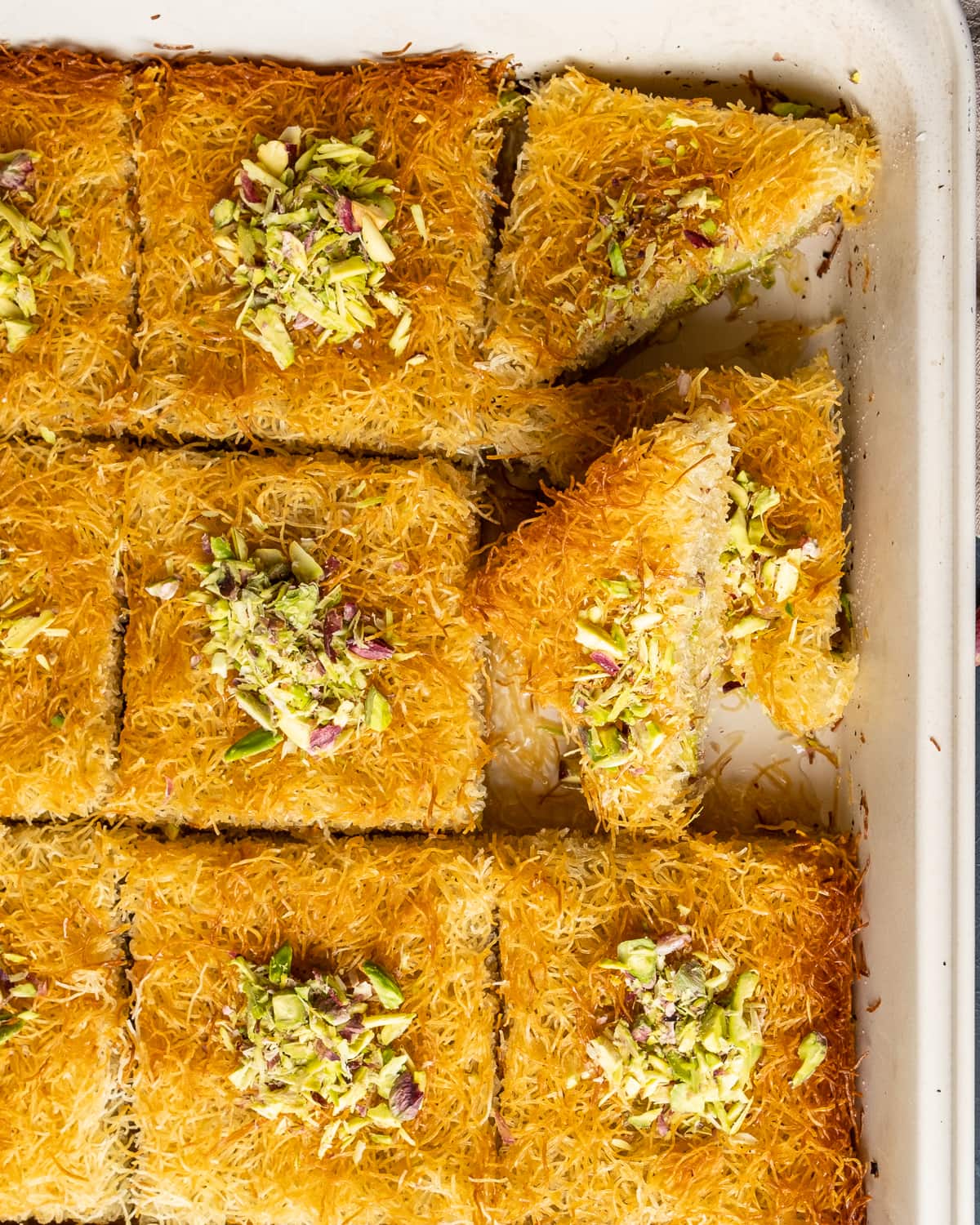Turkish desserts offer a sweet journey through rich flavors and textures. From flaky pastries to creamy puddings, these treats showcase the country’s culinary heritage.
You’ll find a mix of traditional recipes passed down through generations and modern twists on classic favorites.
Turkey’s dessert culture goes beyond the well-known baklava. You’ll discover a wide range of sweets that use ingredients like nuts, fruits, and dairy products in creative ways.
Some desserts may surprise you with unexpected combinations, while others comfort with familiar tastes. Each bite tells a story of Turkey’s history and regional influences.
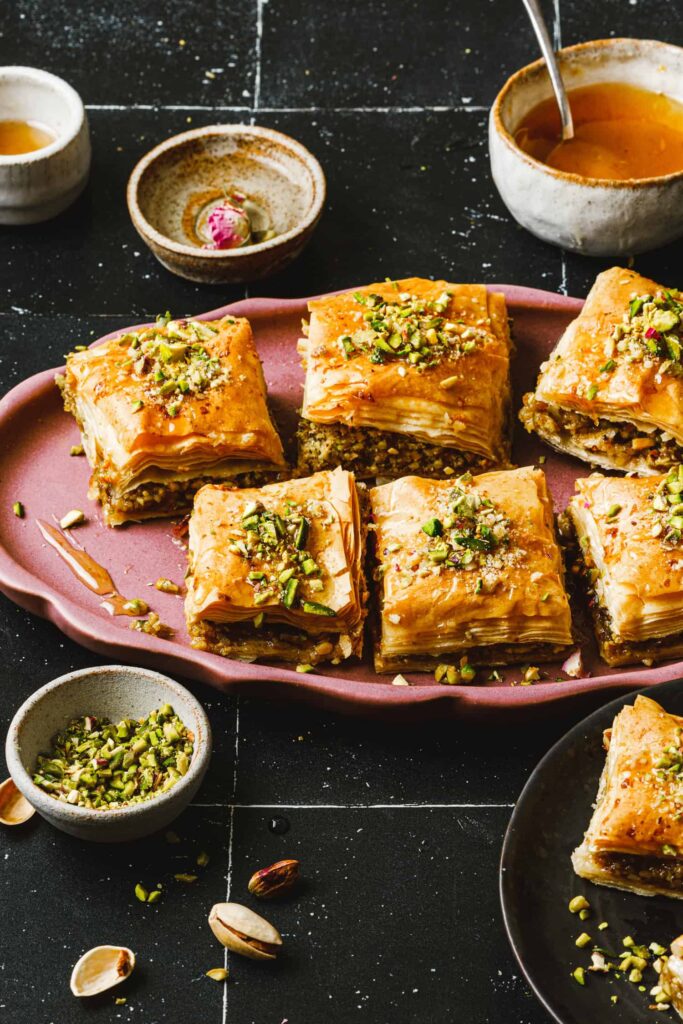
1. Baklava
Baklava is a sweet pastry that’s beloved in Turkish cuisine. It’s made with layers of flaky phyllo dough, chopped nuts, and sweet syrup.
To make baklava, you’ll need to stack sheets of phyllo dough, brushing each layer with melted butter. Chopped pistachios or walnuts are sprinkled between some layers.
After assembling, the baklava is cut into diamond shapes before baking. Once it’s golden brown, a syrup made from sugar, water, and lemon juice is poured over the hot pastry.
The syrup soaks in as the baklava cools, creating a sticky-sweet treat. You can enjoy this rich dessert with Turkish coffee or tea for an authentic experience.
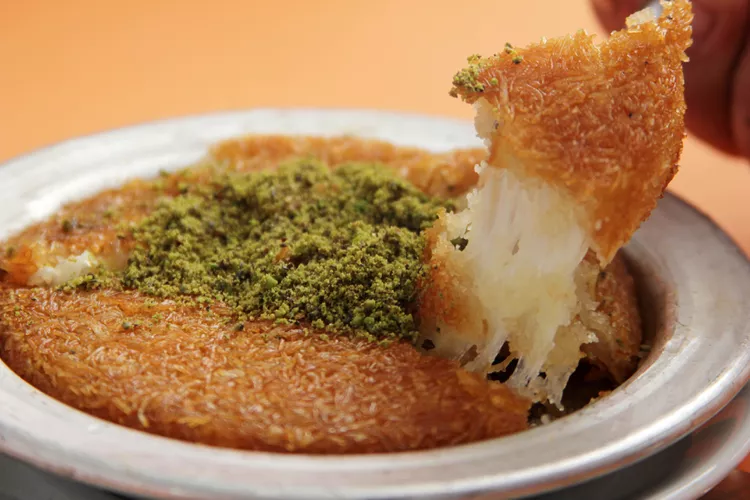
2. Künefe
Künefe is a beloved Turkish dessert that will delight your taste buds. This sweet treat features shredded wheat pastry filled with melted cheese.
The pastry is soaked in sweet syrup, giving it a crispy texture and sugary taste. Künefe is typically served hot, right out of the oven.
You’ll find künefe in kebab restaurants across Turkey. It’s often enjoyed after the main course.
The best künefe comes from cities in southern Turkey like Hatay and Gaziantep. You can also try making it at home with kadayıf dough and unsalted cheese.
This dessert balances sweet and savory flavors perfectly. The gooey cheese and crunchy pastry create an irresistible combination.
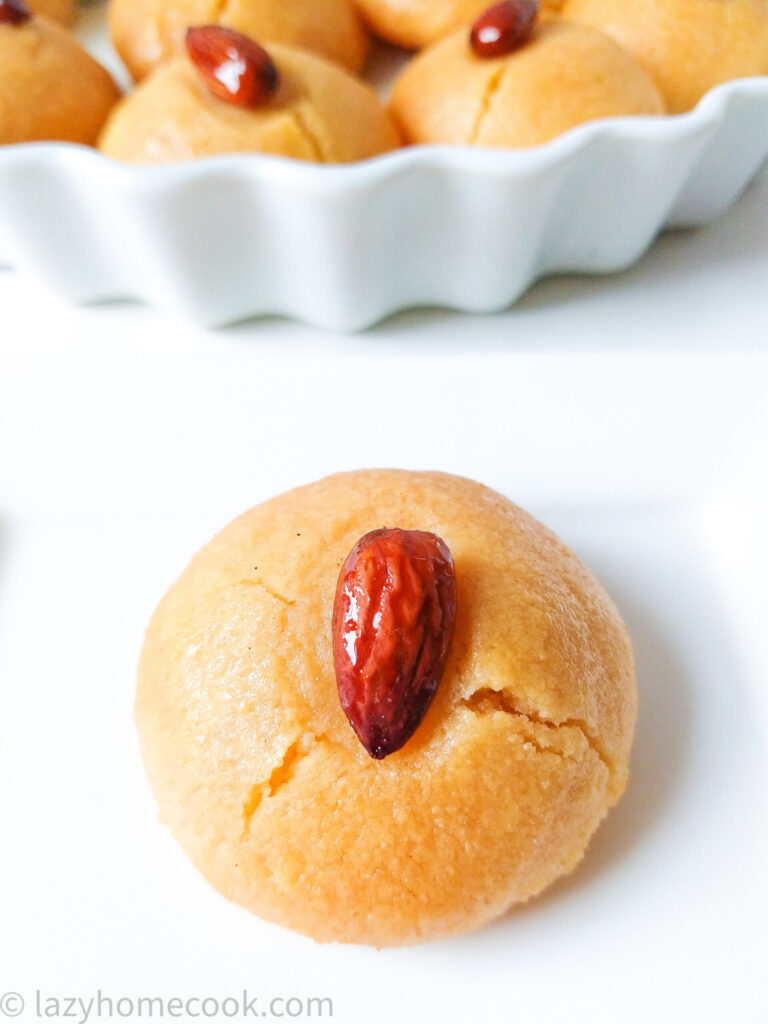
3. Şekerpare
Şekerpare is a beloved Turkish dessert that will satisfy your sweet tooth. These soft, buttery cookies are made with semolina flour and soaked in a fragrant lemon syrup.
To make şekerpare, you’ll mix butter, semolina, eggs, and baking powder to form a dough. Shape the dough into small balls and press an almond or hazelnut on top.
After baking, the golden cookies are drenched in a sweet lemon syrup. This gives them their signature sticky texture and intense sweetness.
You can enjoy şekerpare with Turkish coffee or tea. It’s a popular dessert during Ramadan and other special occasions.
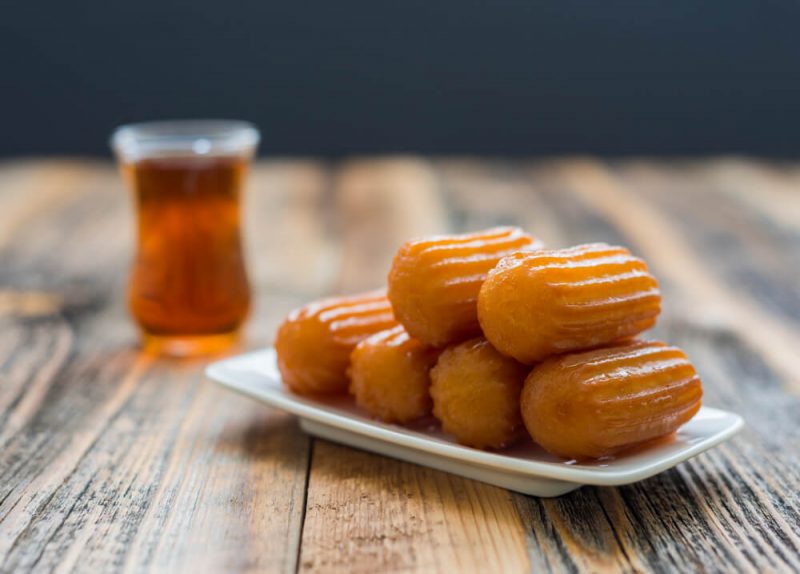
4. Tulumba
Tulumba is a sweet, crispy Turkish dessert that will satisfy your cravings. This fried dough treat is soaked in syrup, giving it a unique texture and flavor.
To make tulumba, you start by preparing a simple syrup with sugar, water, and lemon juice. Then, you create a choux pastry dough using flour, water, butter, and eggs.
The dough is piped into hot oil through a star-shaped nozzle, creating ridged, oblong shapes. As they fry, the tulumba puffs turn golden brown and crispy on the outside.
After frying, you soak the hot pastries in the cooled syrup for a few minutes. This process gives tulumba its signature sweet taste and moist interior.
You can enjoy tulumba as a dessert or a snack, often served alongside Turkish tea or coffee.
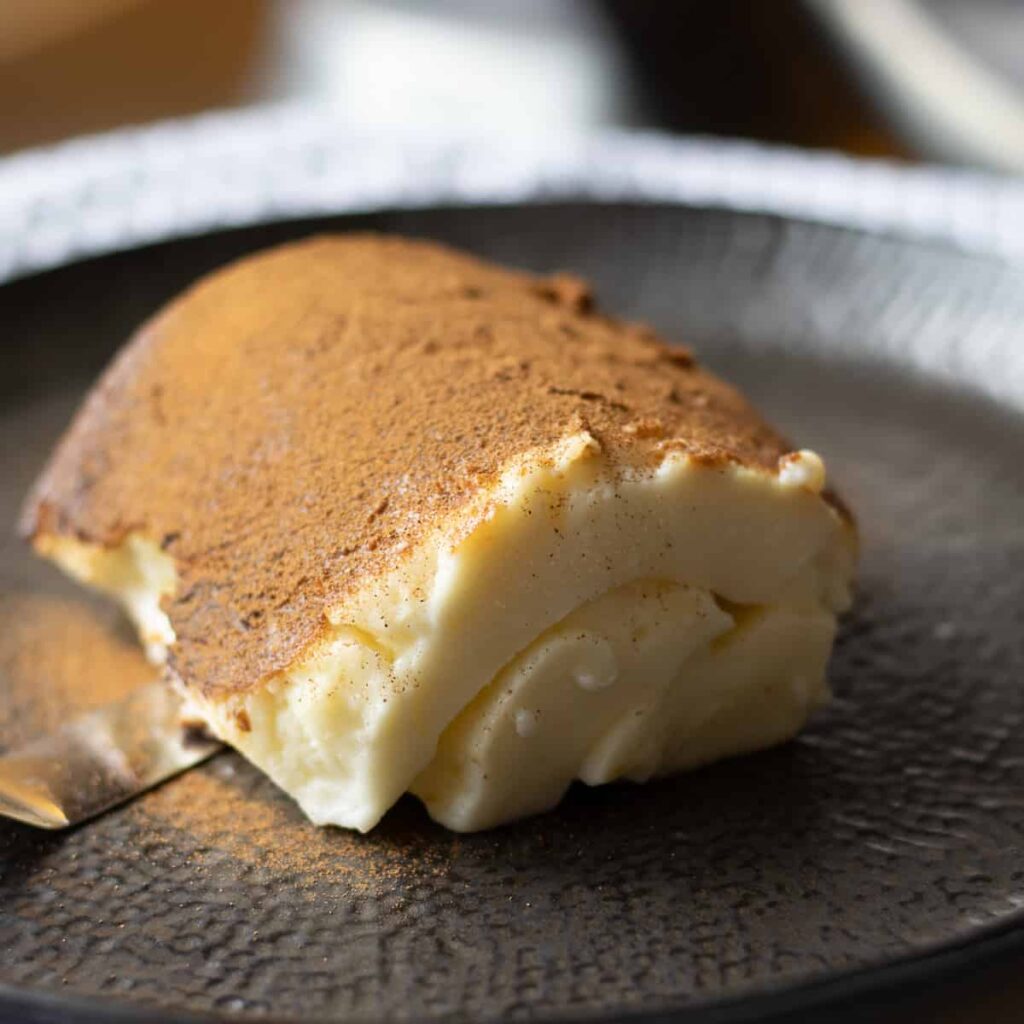
5. Kazandibi
Kazandibi is a popular Turkish dessert known for its unique caramelized bottom. This creamy milk pudding is cooked until it forms a golden-brown crust.
To make kazandibi, you’ll mix milk, sugar, cornstarch, and rice flour in a pan. Cook this mixture while stirring until it thickens into a custard.
Pour the custard into a non-stick pan and heat it over high heat. This step caramelizes the bottom, giving kazandibi its signature taste and appearance.
Once cooled, cut the dessert into slices and roll them up. The caramelized layer will be on the outside, creating a delicious contrast with the soft pudding inside.
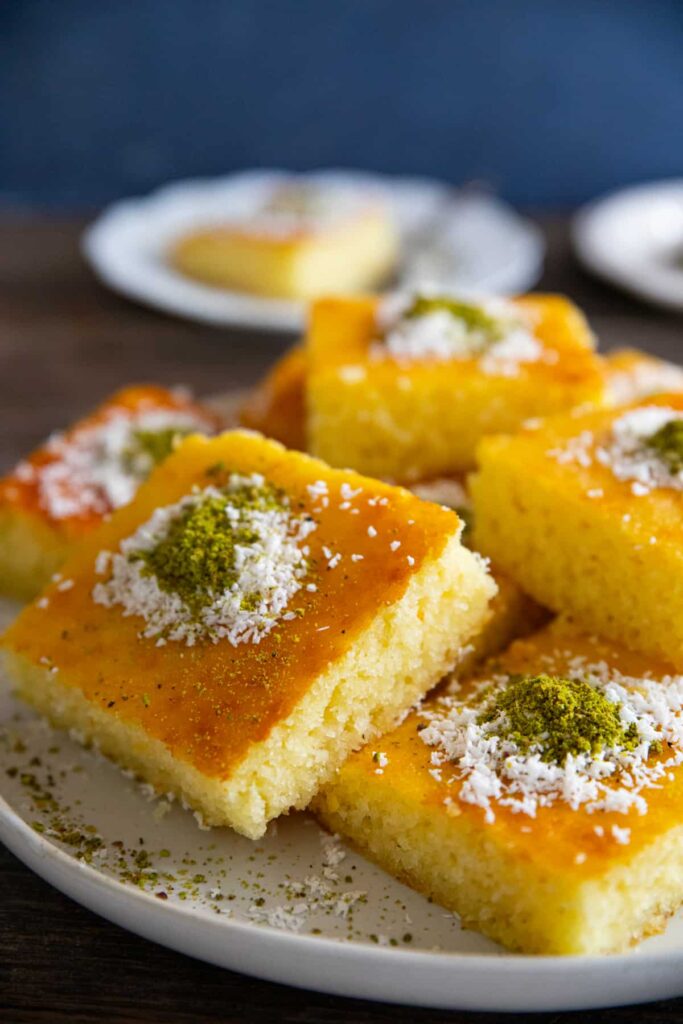
6. Revani
Revani is a beloved Turkish dessert that will satisfy your sweet tooth. This syrup-soaked semolina cake has a light, spongy texture and a delightful citrus flavor.
To make revani, you’ll mix semolina flour, all-purpose flour, sugar, and baking powder. Then add yogurt, melted butter, eggs, and vanilla for a rich batter. Some recipes include lemon zest for extra zing.
After baking, you’ll pour a cool sugar syrup over the warm cake. This syrup often contains lemon juice, which gives revani its signature tangy sweetness.
You can serve revani plain or topped with chopped pistachios for a crunchy contrast. It’s best enjoyed with a cup of Turkish tea or coffee.
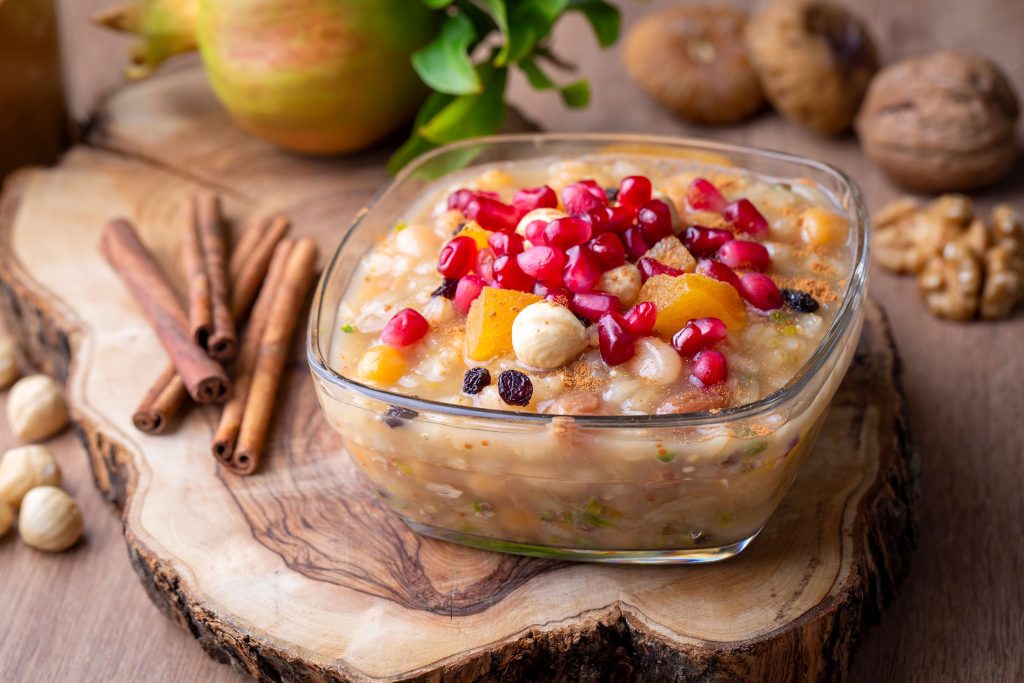
7. Aşure
Aşure is a traditional Turkish dessert with a rich history. You’ll find it made with a mix of grains, legumes, dried fruits, and nuts.
This sweet pudding is often called “Noah’s Pudding” in English. People usually make it in large batches to share with friends and neighbors.
The recipe includes ingredients like wheat, chickpeas, beans, rice, and various dried fruits. You might also taste rose water or citrus zest for extra flavor.
Aşure is typically served on the 10th day of Muharram, the first month of the Islamic calendar. Its unique blend of ingredients makes it stand out among Turkish desserts.
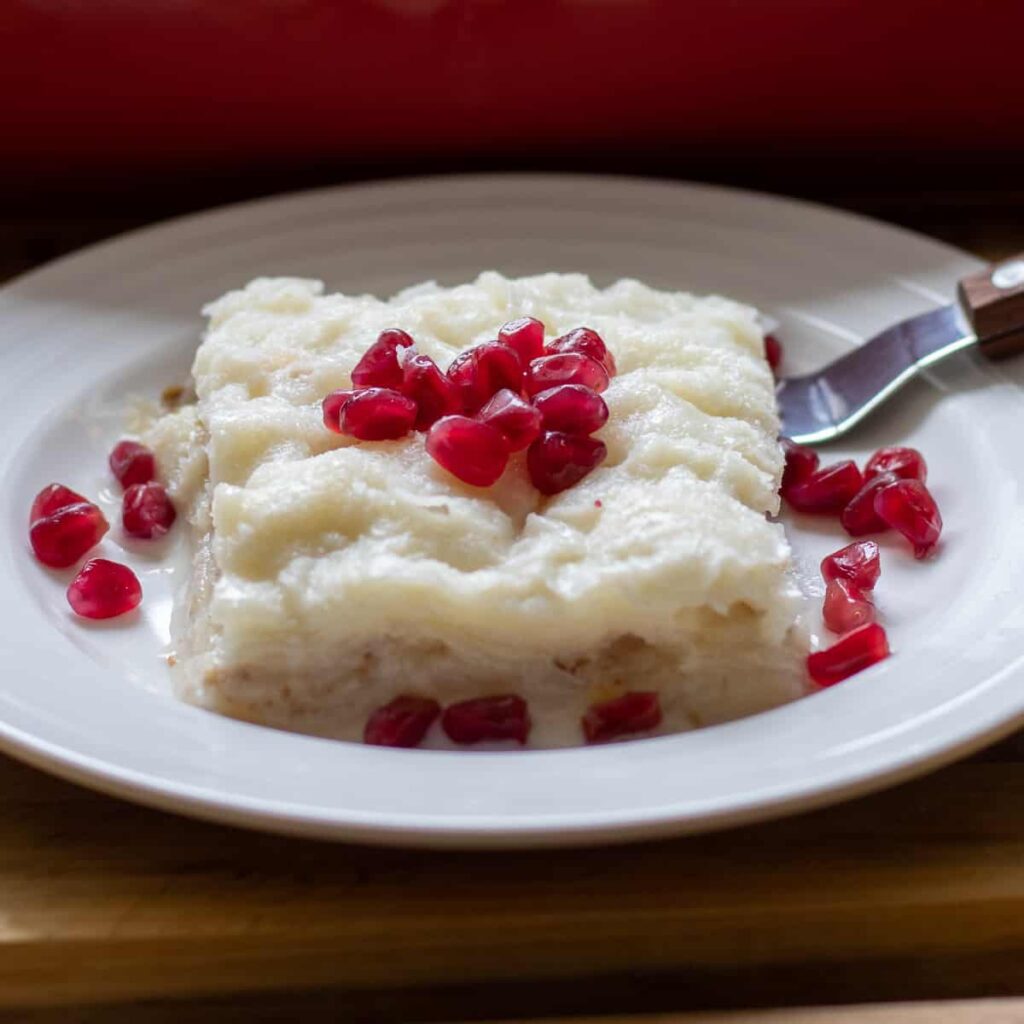
8. Güllaç
Güllaç is a light and refreshing Turkish dessert often enjoyed during Ramadan. It’s made with thin sheets of special dough called güllaç leaves.
To prepare this dessert, you soak the güllaç leaves in sweetened milk. You layer them with chopped nuts, usually walnuts or hazelnuts.
Rose water gives güllaç its distinct flavor. The dessert is then chilled before serving. You can top it with pomegranate seeds for extra color and taste.
Güllaç is easy to make at home. You can find the special leaves in Turkish grocery stores or online. It’s a cool and creamy treat perfect for warm summer days.
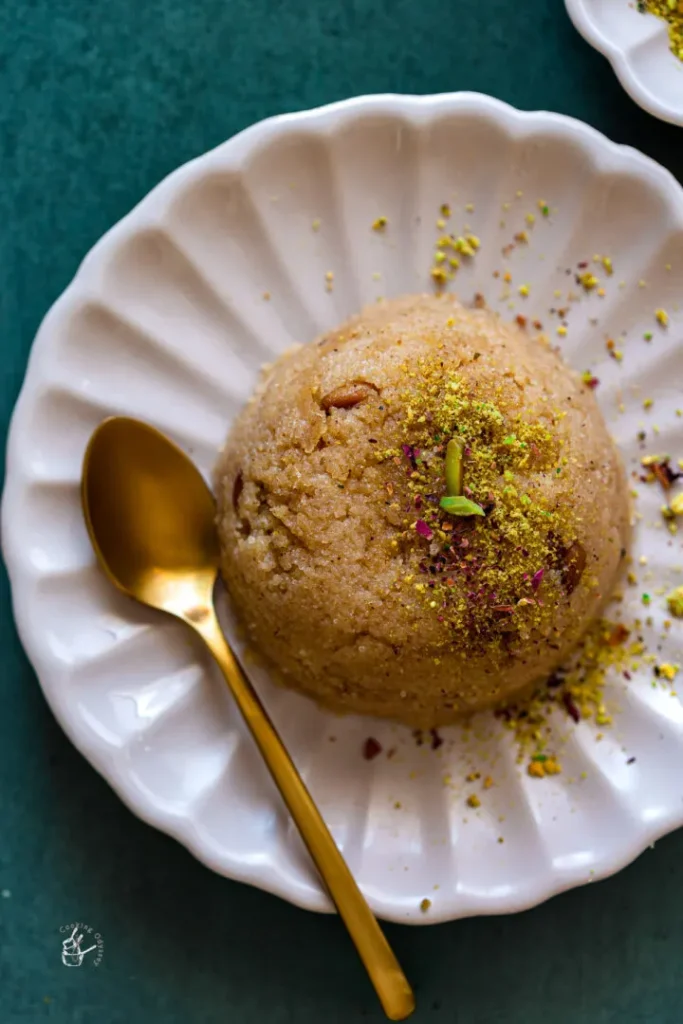
9. İrmik Helvası
İrmik Helvası is a beloved Turkish dessert made from semolina, butter, sugar, and milk. You’ll often find it served at celebrations and religious events.
To make this sweet treat, you start by cooking semolina and pine nuts in melted butter. Then, you add a warm mixture of milk and sugar, stirring until it’s absorbed.
The result is a grainy, pudding-like dessert with a unique texture. It’s usually served warm and sprinkled with cinnamon for extra flavor.
İrmik Helvası is simple to make but requires some skill to get the texture just right. You can enjoy it on its own or pair it with a scoop of ice cream for a delightful contrast.
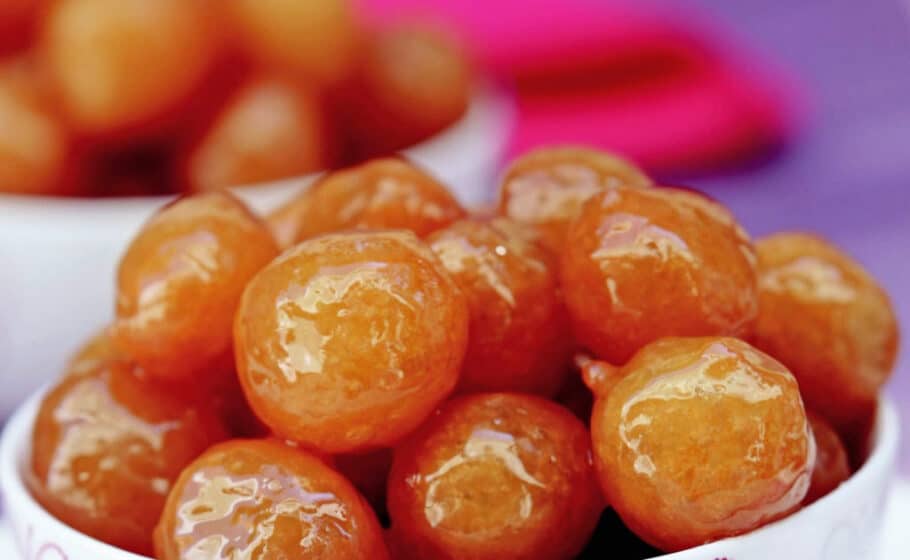
10. Lokma
Lokma is a sweet Turkish treat you’ll love. These small, fried dough balls are crispy on the outside and soft inside.
To make lokma, you mix flour, yeast, and water to form a batter. After it rises, you drop small amounts into hot oil to fry.
Once golden, you soak the fried balls in a sweet syrup. The syrup often has lemon for added flavor.
Lokma is best enjoyed fresh and warm. You can find them at street vendors or make them at home for a tasty dessert.
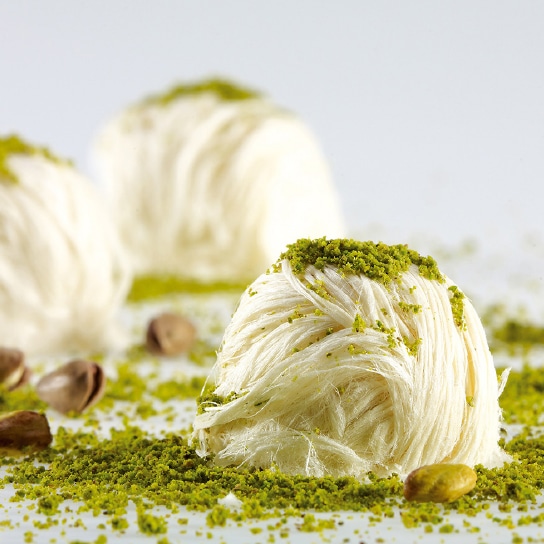
11. Pişmaniye
Pişmaniye is a unique Turkish sweet that resembles cotton candy. This delicate treat dates back to the 15th century and is sometimes called “fairy floss” or “string halva.”
To make pişmaniye, sugar is boiled and poured onto a marble slab to cool. Meanwhile, flour and butter are roasted until lightly browned. The cooled sugar is then pulled into thin strands and mixed with the flour mixture.
The result is a fluffy, melt-in-your-mouth confection with a slightly nutty flavor. You’ll often find pişmaniye flavored with vanilla or coconut. It’s a popular gift during holidays and special occasions in Turkey.
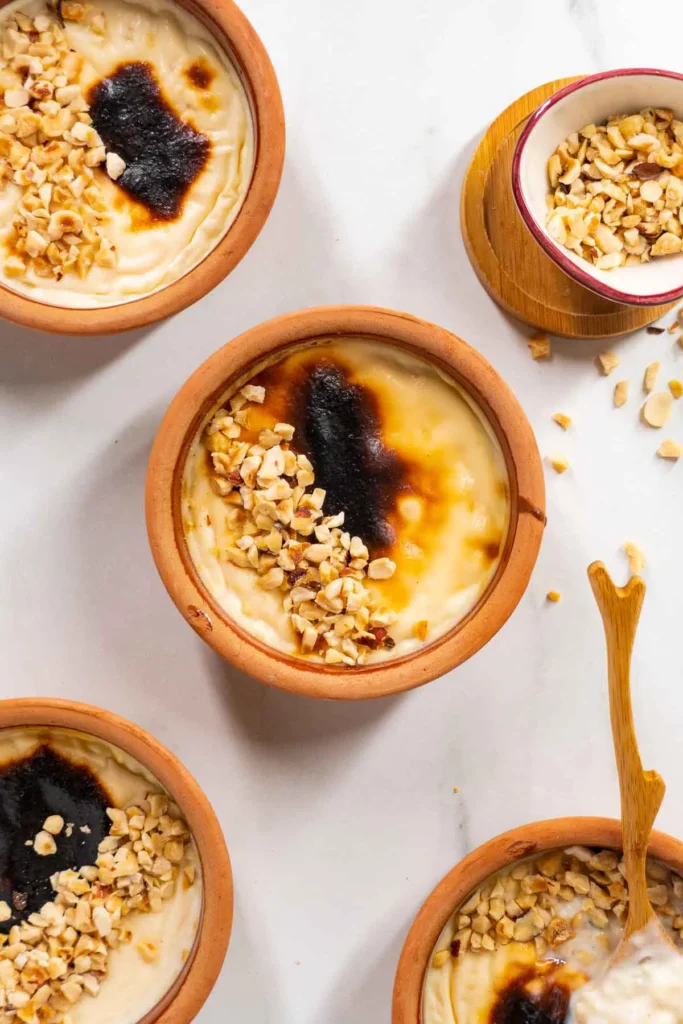
12. Sütlaç
Sütlaç is a beloved Turkish rice pudding dessert. You’ll find it in many homes and restaurants across Turkey.
To make sütlaç, you cook rice in milk until soft. Then you add sugar and starch to thicken it. Some recipes include vanilla for extra flavor.
You can serve sütlaç warm or cold. Many people like it chilled from the fridge. It’s often topped with cinnamon or nuts.
Sütlaç is creamy and comforting. The rice gives it a nice texture. It’s not too sweet, making it a perfect light dessert after a meal.
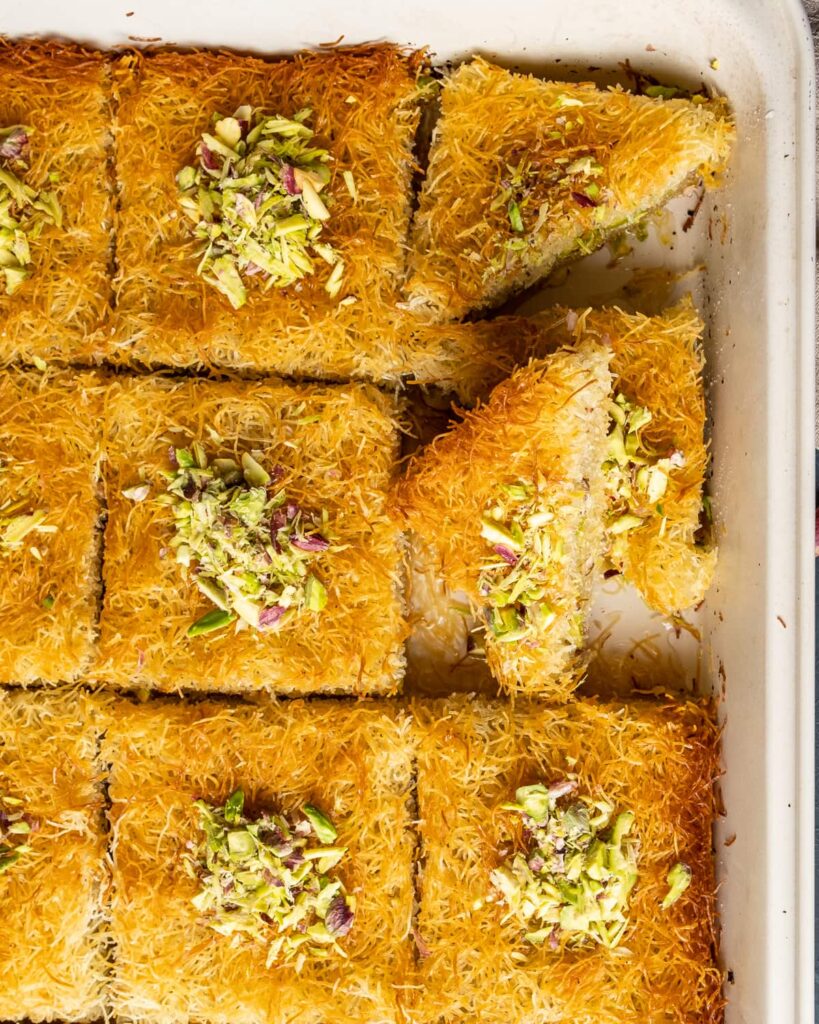
13. Kadayıf
Kadayıf is a beloved Turkish dessert made with thin, shredded dough. You’ll find it soaked in sweet syrup and often filled with nuts.
To make kadayıf, you first separate the fine strands of dough. Then you mix them with melted butter. This creates a crispy texture when baked.
You layer the buttered dough in a baking pan. A filling of chopped pistachios or walnuts goes in the middle. After baking until golden brown, you pour sugar syrup over the hot dessert.
Kadayıf has a satisfying crunch and a rich, sweet flavor. It’s typically cut into squares or diamonds before serving. You can enjoy it warm or at room temperature.
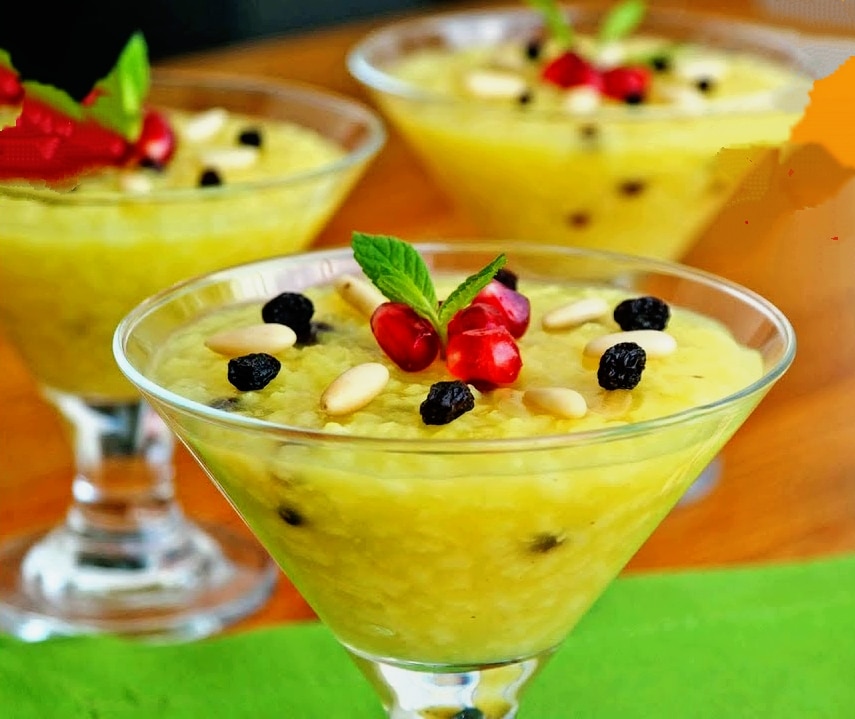
14. Zerde
Zerde is a sweet rice pudding dessert popular in Turkish cuisine. It gets its golden color from saffron and turmeric.
You’ll find zerde often served at special occasions like weddings and celebrations. The dessert has a creamy texture and sweet flavor.
To make zerde, rice is cooked with water, sugar, and spices. Rosewater adds a subtle floral note. Some recipes include nuts or dried fruits as toppings.
Zerde holds cultural significance in Turkey. It’s believed to bring good luck to newlyweds when served at weddings.
You can enjoy this dessert warm or chilled. It pairs well with Turkish coffee or tea for an authentic experience.
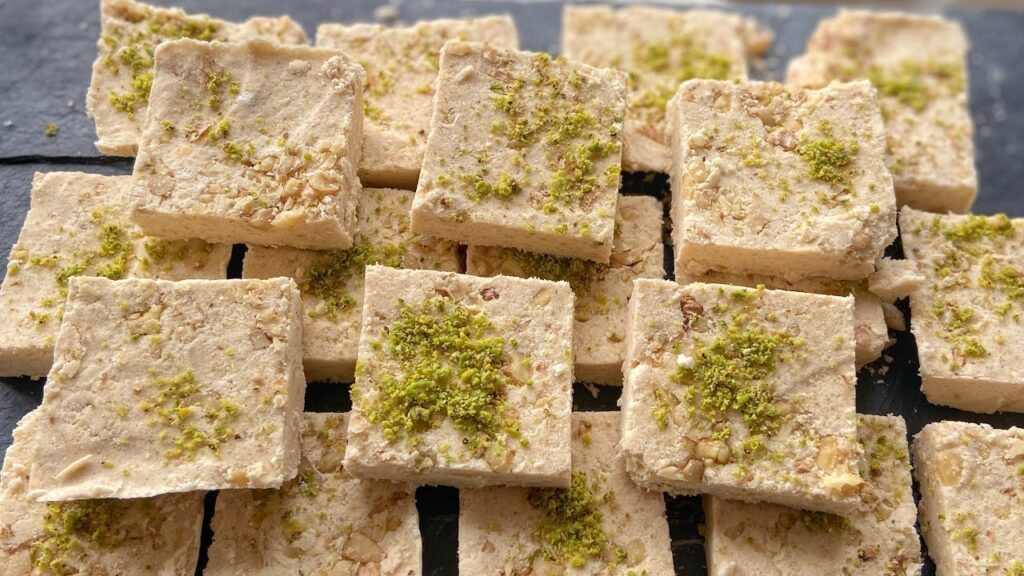
15. Saray Helvası
Saray helvası is a sweet Turkish treat you’ll love. It’s a type of candy that comes from Kastamonu, a city in Turkey.
The main ingredients are sugar, wheat flour, and butter. Sometimes vegetable margarine and vanilla flavor are added too.
You’ll find this dessert has a unique texture. It’s soft and melts in your mouth. The name “saray” means palace, hinting at its royal origins.
When you try saray helvası, you’ll taste its rich, buttery flavor. It’s often enjoyed with a cup of Turkish tea or coffee.
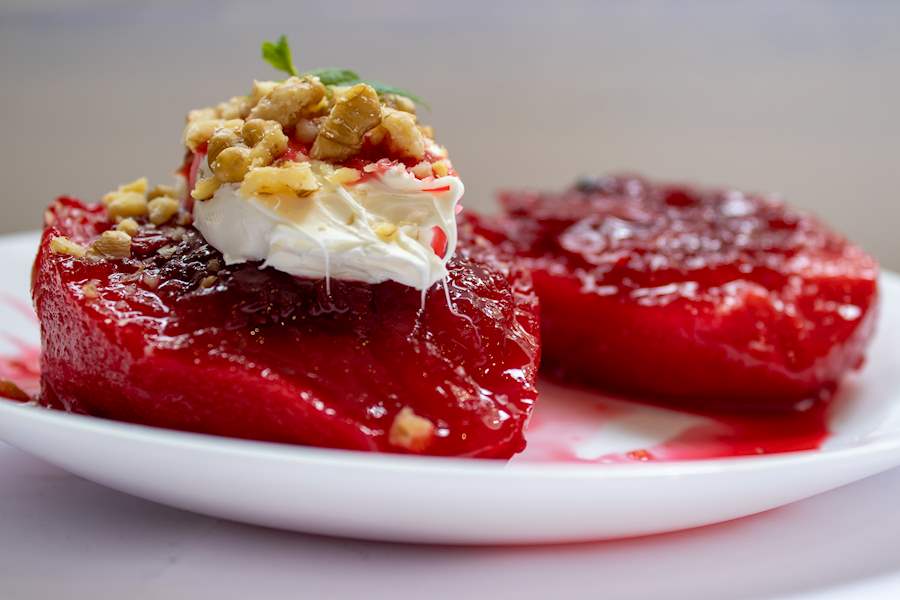
16. Ayva Tatlısı
Ayva tatlısı is a delightful Turkish dessert made from quince. You’ll love the sweet and fragrant flavors of this treat.
To make it, you peel and halve quinces, then cook them in a sugar syrup. The cooking process turns the fruit a beautiful red color.
Cinnamon and cloves often add warmth to the dish. The quinces simmer until they’re soft and infused with sweetness.
You can serve ayva tatlısı warm or cold. It’s common to top it with kaymak (Turkish cream) or crushed nuts like pistachios.
This dessert is a great way to enjoy quince when it’s in season. It’s simple to make but impressive to serve.
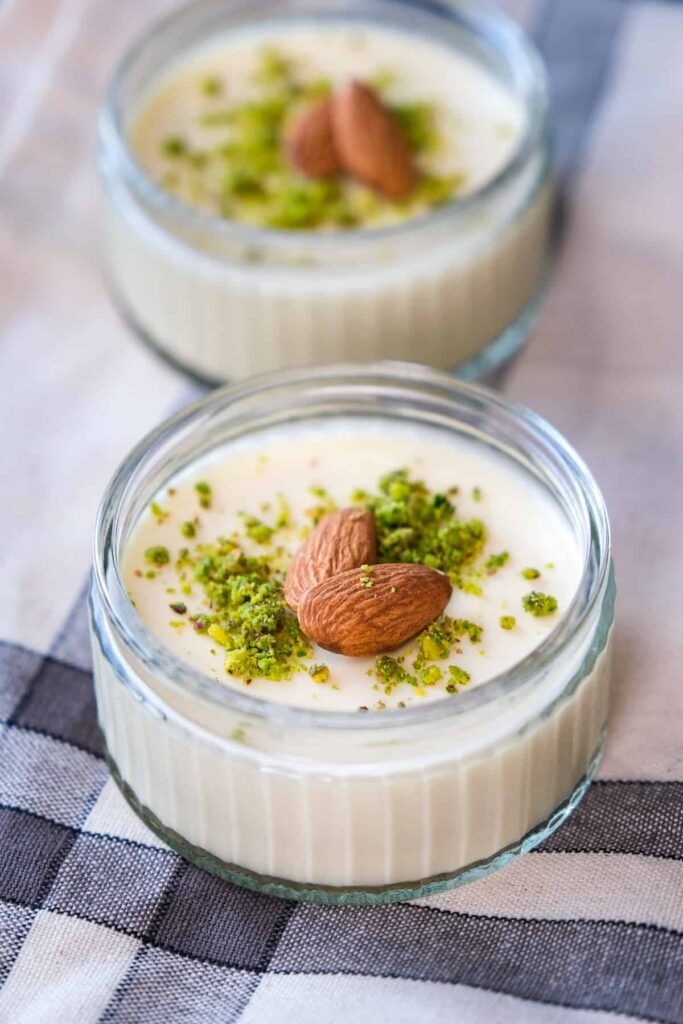
17. Keşkül
Keşkül is a beloved Turkish almond pudding dessert. You’ll find it’s smooth, creamy, and has a delicate almond flavor.
To make keşkül, you combine milk, sugar, rice flour, and cornstarch. Ground almonds give it its signature taste. Some recipes also include coconut for extra richness.
You cook the mixture until it thickens, then pour it into small bowls or glasses. After cooling and chilling, it’s ready to eat.
For a fancy touch, you can sprinkle crushed pistachios and coconut flakes on top. A whole almond in the center makes a pretty garnish.
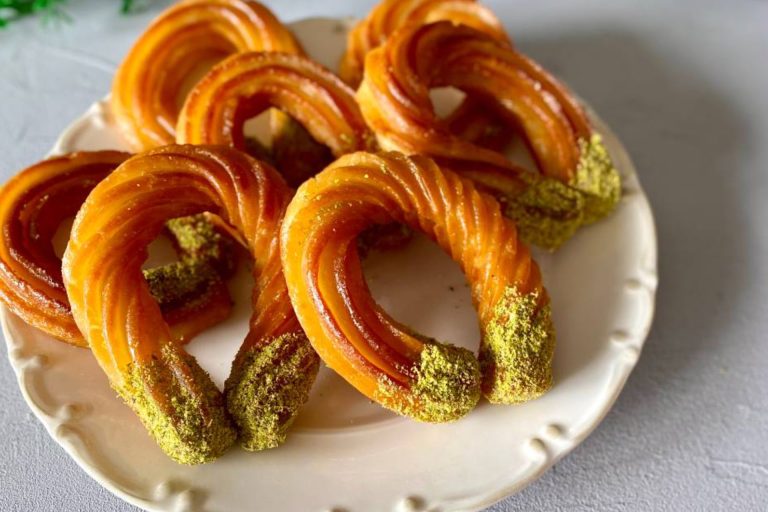
18. Halka Tatlısı
Halka tatlısı is a beloved Turkish street dessert. You might recognize it as Turkish churros. These sweet rings are made from fried dough and soaked in syrup.
To make halka tatlısı, you mix flour, water, and salt into a dough. Then you pipe the dough into rings and fry them until golden. The crispy rings get a bath in sugar syrup flavored with lemon.
You’ll find halka tatlısı sold by street vendors all over Istanbul. It’s a popular snack to grab while exploring the city. The dessert gives you a quick energy boost as you walk around.
Halka tatlısı has been enjoyed in Turkey for generations. It’s a simple but satisfying treat that both locals and tourists love.
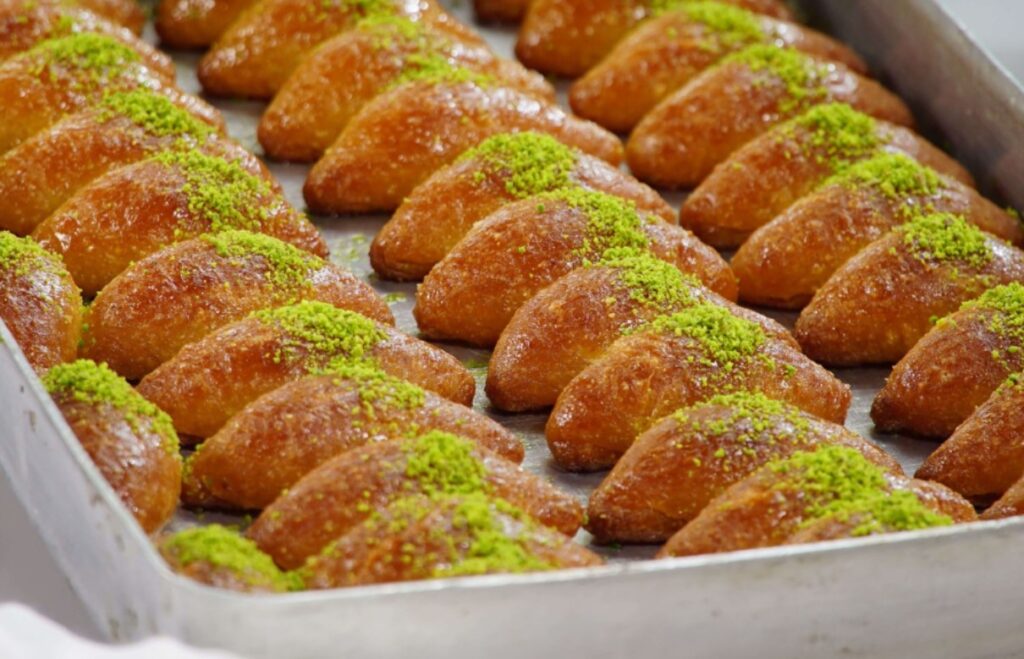
19. Kalburabastı
Kalburabastı is a beloved Turkish dessert that will satisfy your sweet tooth. These small pastries are drenched in a sugary syrup, creating a delightful treat.
The pastry is made with a mix of butter, flour, and semolina. Walnuts are often added for extra flavor and texture. The dough is shaped into small balls and pressed with a special sieve to create a unique pattern.
After baking, the pastries are soaked in a syrup made from water, sugar, and lemon juice. This gives them their signature sweetness and moisture.
You’ll often find kalburabastı served during holidays, especially Şeker Bayramı. It’s a popular choice for special occasions and gatherings.
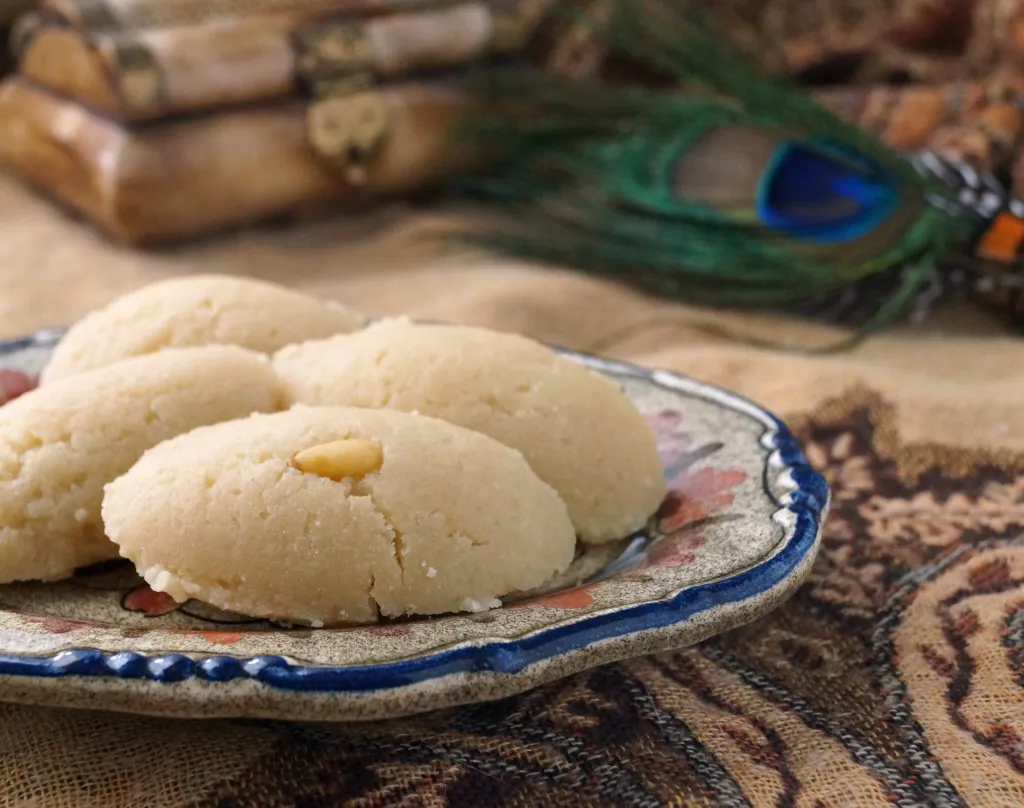
20. Helva
Helva is a beloved Turkish dessert with a long history.
You can find different types of helva in Turkey, including tahini, semolina, and flour varieties.
The flour helva, called “un helvası” in Turkish, is easy to make at home.
You only need four main ingredients: butter, flour, sugar, and water.
To enrich your helva, try adding nuts like pine nuts, walnuts, or pistachios.
A sprinkle of cinnamon on top can add extra flavor.
Helva has a sweet taste and dense texture.
It’s a great option when you want a quick dessert but have limited ingredients on hand.
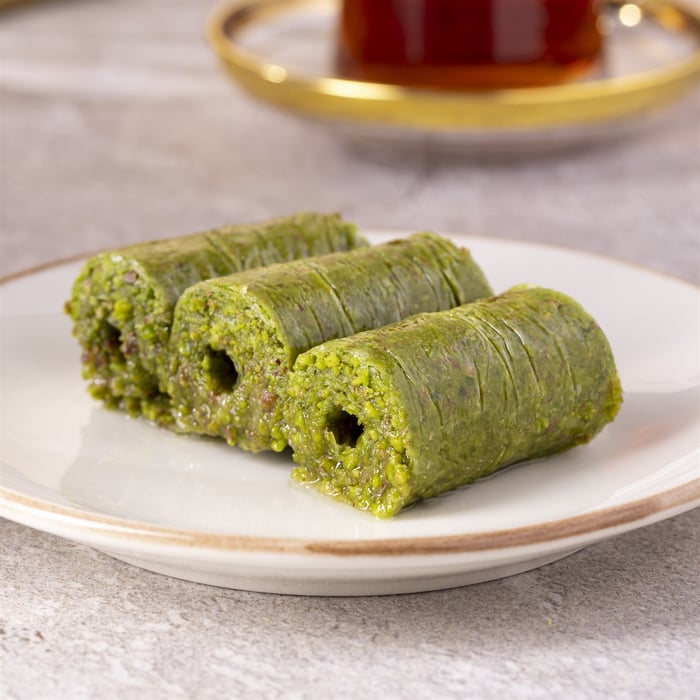
21. Fıstıklı Sarma
Fıstıklı sarma is a sweet Turkish pastry that will delight your taste buds.
It features a bright green filling made from early-harvested Gaziantep pistachios.
The filling, called fıstık ezmesi (pistachio butter), has a smooth, paste-like texture similar to marzipan.
This natural green pistachio paste is wrapped in a thin sheet of phyllo dough.
The rolled pastry is then cut into small pieces, usually about 1 inch long.
When baked, the outer layer becomes crisp and golden, creating a delightful contrast with the soft, nutty filling inside.
Fıstıklı sarma offers a perfect balance of textures and flavors.
You’ll enjoy the crunch of the pastry and the rich, sweet taste of pistachios in every bite.
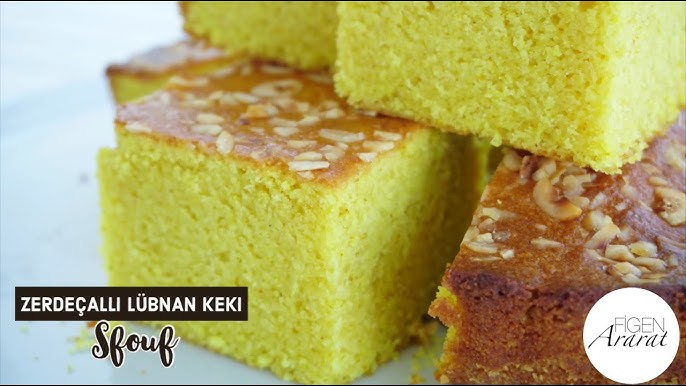
22. Zerdeçallı Kek
Zerdeçallı Kek is a Turkish cake that stands out with its unique turmeric flavor.
This soft and moist dessert gets its vibrant yellow color from turmeric, a spice known for its health benefits.
You’ll find this cake has a spongy texture that melts in your mouth.
It often includes ingredients like eggs, sugar, flour, and yogurt, which contribute to its rich taste and tender crumb.
Some recipes add a touch of orange or lemon to complement the turmeric.
You can enjoy Zerdeçallı Kek plain or with a chocolate sauce for extra indulgence.
This cake is perfect for tea time or as a light dessert after meals.
Its appealing color and delightful taste make it a favorite among Turkish sweet treats.
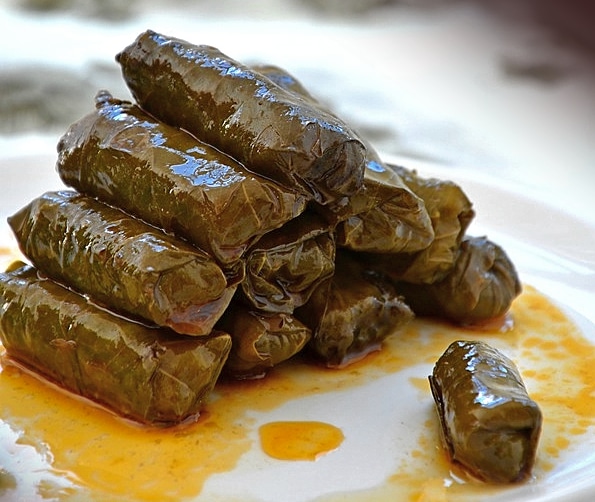
23. Gelinim Sarma
Gelinim Sarma is a sweet Turkish dessert that resembles rolled pudding. The name means “my bride’s roll” in English.
This treat consists of a thin, soft cake layer spread with a creamy filling. The cake is then carefully rolled up to create a log shape.
You’ll often find Gelinim Sarma coated in shredded coconut or chopped nuts.
This adds texture and flavor to the dessert.
The filling typically includes milk, sugar, and flour. Some recipes add cocoa powder for a chocolate version.
Gelinim Sarma is perfect for special occasions or as a sweet ending to your meal.
You can enjoy it with a cup of Turkish tea or coffee.
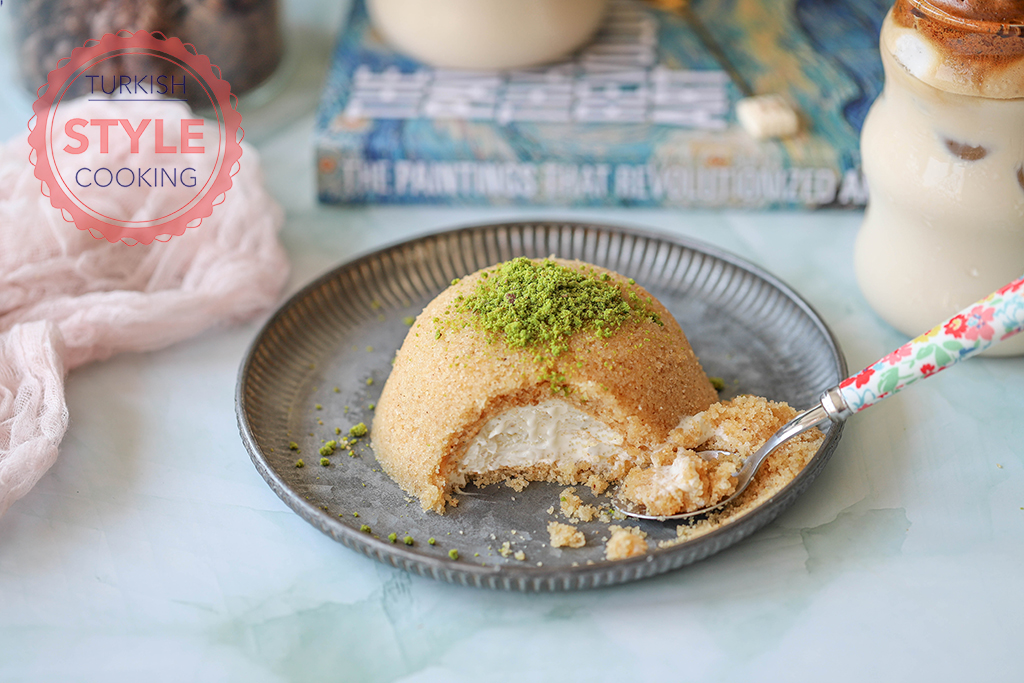
24. Pamuk Prenses
Pamuk Prenses is a light and fluffy Turkish dessert. Its name means “Snow White” in English. This sweet treat has a cloud-like texture that melts in your mouth.
You’ll find layers of milk pudding and whipped cream in this dessert. It’s often topped with crushed pistachios or coconut flakes. The combination creates a lovely balance of flavors and textures.
Pamuk Prenses is perfect for hot summer days.
Its cool, creamy consistency offers a refreshing end to any meal. You can find this dessert in many Turkish pastry shops and cafes.
History of Turkish Desserts
Turkish desserts have a rich history spanning centuries. They blend influences from many cultures and regions, resulting in unique and flavorful treats.
Culinary Heritage
Turkish dessert traditions date back to the Ottoman Empire. Palace kitchens were centers of culinary innovation. Chefs created elaborate sweets for sultans and royal guests. Many popular desserts today, like baklava, originated in these kitchens.
Sweet treats played a big role in Ottoman social life. They were served at important events and celebrations. Desserts also had symbolic meanings. Some were given as gifts to show respect or friendship.
As the empire grew, new ingredients and techniques were introduced. This led to more variety in Turkish sweets. Milk-based desserts became popular, along with fruit-based treats.
Influence of Cultural Diversity
Turkey’s location between Europe and Asia shaped its dessert culture. The country’s sweets reflect a mix of Eastern and Western tastes.
Central Asian nomads brought dairy-based desserts. Middle Eastern influences added nuts and honey to many recipes. Mediterranean fruits found their way into Turkish sweets. Balkan flavors contributed to the diversity of treats.
This blend of cultures created unique desserts. For example, künefe combines cheese, pastry, and syrup. Tavuk göğsü mixes chicken breast with milk and sugar for a surprising treat.
Turkish desserts continue to evolve. New creations appear alongside traditional favorites. The rich history of these sweets lives on in modern Turkish cuisine.
Ingredients Commonly Used
Turkish desserts rely on a mix of nuts, spices, and dairy products. These ingredients give the sweets their unique flavors and textures. Let’s look at some key components used in many Turkish treats.
Nuts and Spices
Pistachios and walnuts are stars in Turkish desserts. You’ll find them in baklava and many other pastries. Almonds and hazelnuts also show up often. These nuts add crunch and richness.
Cinnamon is a go-to spice. It’s sprinkled on rice pudding and mixed into dough. Cardamom gives a warm, sweet taste to many treats. Cloves bring a bold flavor to some desserts.
Rose water and orange blossom water are common. They add a floral scent to syrups and pastries. Vanilla is used in modern versions of classic sweets.
Dairy Products
Milk is key in Turkish desserts. You’ll see it in rice pudding and many other creamy treats.
Butter gives richness to pastries like baklava.
Yogurt shows up in both sweet and savory dishes. It’s the base for some cold desserts and adds tang to others.
Kaymak, a thick cream, tops many desserts. It’s like clotted cream but even richer. You might find it on pancakes or stuffed in pastries.
Cheese isn’t just for savory foods. Some sweets use a mild, unsalted cheese as a filling. It adds a unique texture and flavor to desserts.
